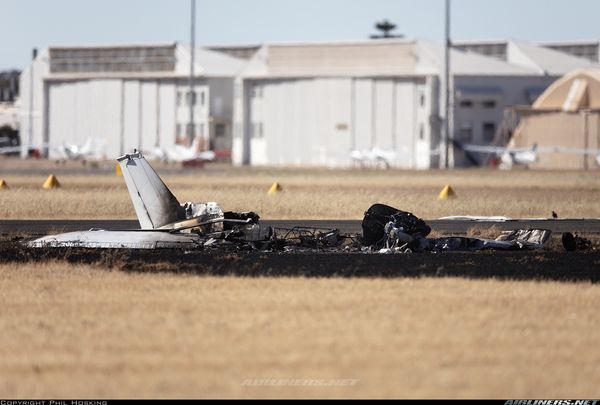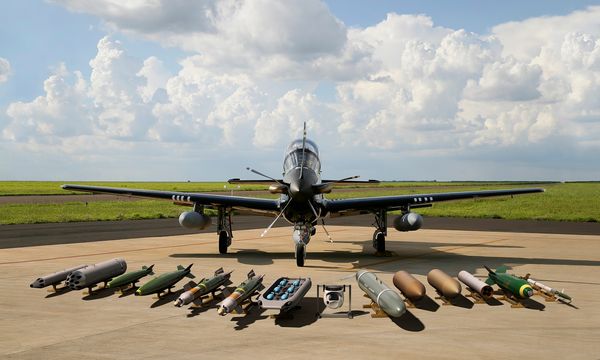Air Canada recently unveiled a brand-new cabin retrofit coming to its fleet of Airbus A321 and A320 aircraft. This new retrofit is a huge upgrade for these Airbus jets and represents Air Canada's efforts to streamline the passenger experience across its narrowbody fleet.

Elevated Experience
The new retrofit brings the following upgrades to Air Canada's Airbus narrowbody fleet:
- Larger overhead bins
- Upgraded seats
- Bluetooth audio
- New exterior tail cameras
- Color LED mood lighting
- Fast WiFi
- In-seat power
The latest Airbus "Airspace XL" overhead bins have been installed in the new retrofit. These are among the largest overhead bins in the business and will also be seen on upcoming A321XLRs.

The new retrofit, as expected, sees brand new seats being installed throughout the aircraft. Gone are the older blue fabric-style seats commonplace across the A321s and A320s. The new seats are the same leather seats seen on Air Canada's A220 and 737 MAX aircraft.
While thinner, the new seats are designed to optimize personal space and improve ergonomics. The seats also come with new inflight entertainment (IFE) screens that offer Bluetooth. This benefit means that passengers will have the ability to connect their headsets to the IFE.

Such an innovation eliminates the need to provide passengers with single-use earphones, supporting Air Canada's sustainability objectives.
The IFE screens even come with a first feature for any narrowbody aircraft: the presence of onboard tail and belly cameras. These provide passengers with high-resolution views of what's going on outside.
Previously, such camera features were only offered onboard widebody aircraft like the Airbus A350 and A380. This feature on Air Canada A320s and A321s is something never seen before.

Age is Just a Number
Air Canada's first aircraft with the new cabin has already entered service. 14 A321s and eight A320s are on the cards to be refurbished. This first retrofitted aircraft is C-GITU, a 22-year-old Airbus A321-200 that wears the special "Star Alliance" livery.
It should be mentioned that Air Canada's fleet of A320s and A321s are not, by any means, new aircraft. Air Canada's A320s are 24 years old on average, while the A321s are 20 years old on average. The oldest A320 is C-GPWG at over 32 years old, while the youngest is C-FZQS at 20 years old.

However, many of the current A320s are slated to be retired. Air Canada plans to retrofit only two legacy A320s, so what about the remaining six?
Air Canada will soon receive six former Alaska (ex-Virgin America) A320s. These six will be delivered with the new cabins. It can be assumed that the two youngest legacy A320s will also be retrofitted. As it stands, all of the current active A321s will be retrofitted that range from 14 years to 22 years of age.

Air Canada will also receive a 10-year-old example that previously flew with EVA Air. This aircraft, C-FCEU, will be the only aircraft in the fleet with sharklets. It should be mentioned that even though many of these soon-to-be-retrofitted planes are over 20 years old, the fact is that the airframe's age does not really matter.
As long as airlines conduct routine maintenance and checks on the aircraft, the plane's age makes no difference to how safe it is to fly. Air Canada expects its A320-family retrofit project to continue until at least 2025.
Final Delivery Tally and OEM Tracker » Nearly 500 Flights Cancelled Following Venezuela Attack, Caribbean Airspace Closure » Jazeera Airways to Become First Commercial Carrier at Amman Marka Airport »
Comments (0)
Add Your Comment
SHARE
TAGS
NEWS Air Canada Airbus A320 A321 Retrofit Cabin Interiors Canada NarrowbodyRECENTLY PUBLISHED
 Cessna 172 Bursts into Flames After ‘Heavy Landing’ at Adelaide’s Parafield Airport
Emergency services rushed to Parafield Airport (YPPF) today, January 5, 2026, following a dramatic aircraft accident that left a light plane engulfed in flames. Despite the intensity of the fire, which sent thick plumes of black smoke over Adelaide’s northern suburbs.
NEWS
READ MORE »
Cessna 172 Bursts into Flames After ‘Heavy Landing’ at Adelaide’s Parafield Airport
Emergency services rushed to Parafield Airport (YPPF) today, January 5, 2026, following a dramatic aircraft accident that left a light plane engulfed in flames. Despite the intensity of the fire, which sent thick plumes of black smoke over Adelaide’s northern suburbs.
NEWS
READ MORE »
 EU’s €15M Vision for the Future Multirole Light Aircraft (FMLA) by 2035
The European Union has officially signalled its intent to develop a new class of low-observable, cost-effective combat aviation. In a move aimed at bridging the capability gap between high-end fifth-generation fighters and low-intensity mission requirements, the European Defence Fund (EDF) has allocated €15 million for the initial competition and design phase of the FMLA.
INFORMATIONAL
READ MORE »
EU’s €15M Vision for the Future Multirole Light Aircraft (FMLA) by 2035
The European Union has officially signalled its intent to develop a new class of low-observable, cost-effective combat aviation. In a move aimed at bridging the capability gap between high-end fifth-generation fighters and low-intensity mission requirements, the European Defence Fund (EDF) has allocated €15 million for the initial competition and design phase of the FMLA.
INFORMATIONAL
READ MORE »
 AirBorneo Commences Rural & Regional Flights
A new era in Southeast Asian regional aviation has officially begun as AirBorneo (formerly MASwings) commenced its inaugural flight operations on January 2, 2026. The launch follows the successful completion of the legal and operational takeover of MASwings Sdn Bhd by the Sarawak state government from the Malaysia Aviation Group (MAG) on New Year's Day.
ROUTES
READ MORE »
AirBorneo Commences Rural & Regional Flights
A new era in Southeast Asian regional aviation has officially begun as AirBorneo (formerly MASwings) commenced its inaugural flight operations on January 2, 2026. The launch follows the successful completion of the legal and operational takeover of MASwings Sdn Bhd by the Sarawak state government from the Malaysia Aviation Group (MAG) on New Year's Day.
ROUTES
READ MORE »



